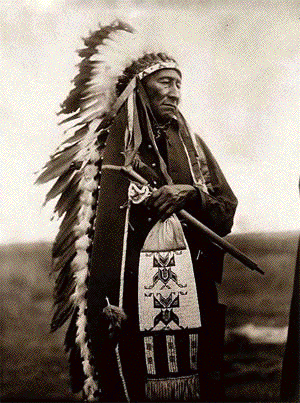Encyclopedia Dubuque
"Encyclopedia Dubuque is the online authority for all things Dubuque, written by the people who know the city best.”
Marshall Cohen—researcher and producer, CNN
Affiliated with the Local History Network of the State Historical Society of Iowa, and the Iowa Museum Association.
DAKOTA
DAKOTA. A powerful tribe of Native Americans, often called the Sioux that forced the MIAMI back into Wisconsin, the DEakota dominated other tribes and posed a serious threat to white settlement of the Mississippi Valley.
Warfare between the Dakota and other tribes was discussed by Julien DUBUQUE and Zebulon Montgomery PIKE on September 1, 1805. In 1830 an attempt was made to cancel a visit of SAUK AND FOX to a peace conference at Prairie du Chien. It was discovered that Dakota, WINNEBAGO and Menominee tribes were joined in a confederacy to war on the Sauk and Fox.
The Dakota discovered the arrival date of the Fox and massacred representatives of the tribe including PIA-NO-SKY. One wounded man was placed in a canoe and told to return to his tribe living near the Dubuque mines to tell the story. Efforts to keep the Fox and Sauk separate from the Dakota led to the creation of the Neutral Zone in 1825. North of this forty-mile wide region was the territory of the Dakota. The Sauk and Fox were to remain south of the area.

Agents of the American Fur Company may have urged the Sauk and Fox to retaliate against the Dakota. A crisis would have led the federal government to purchase the lands of the Native Americans and payoff debts the tribes had accumulated. Near the end of July 1831, a war party of Fox left their village at Dubuque by river for a Menominee encampment near Prairie du Chien. Murdering the sleeping Dakota men, women, and children, the Fox got their revenge and then fled south. They gathered the rest of the tribe and fled their Dubuque village forever.
Dakota, numbering as many as twenty-five thousand, lived in Minnesota and Wisconsin in the late 17th century. Dakota were also known as the Sioux, a name derived from Nadowe-is-iw, an Objibway term meaning "adder." The Sioux therefore were the "enemy." Dakota referred to themselves as Oceti Sakowin meaning "Seven Council Fires" which indicated their political divisions of Mdewakanton, Sisseton, Wahpeton, Wahpekute, Yankton, Yanktonai and Teton.




